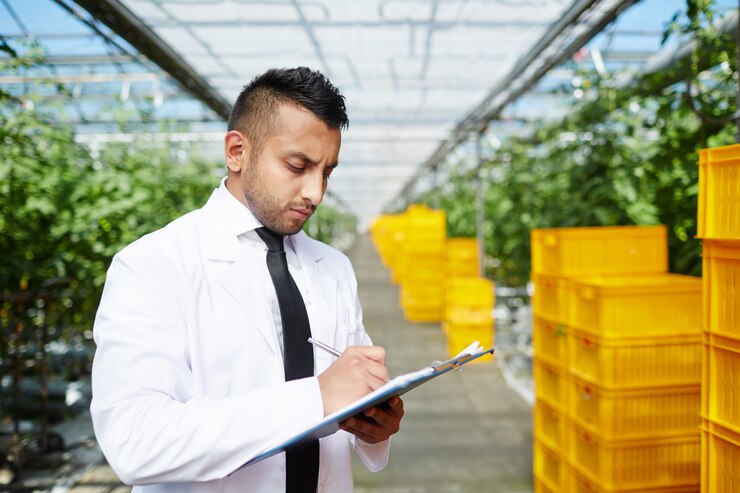In the ever-evolving landscape of agriculture, the need to manage risks effectively is becoming increasingly critical. Farmers face a myriad of challenges, from unpredictable weather patterns to pest outbreaks and market fluctuations. To ensure the sustainability of their operations and maintain a stable food supply, it is essential for farmers to anticipate and mitigate these risks. One of the most promising approaches to achieving this is the implementation of early warning systems (EWS) for crop risk management. These systems leverage technology and data to provide timely alerts, enabling farmers to take proactive measures that minimize potential losses.
In this article, we will explore the importance of early warning systems in crop risk management, the key components of an effective EWS, and how these systems contribute to a more resilient agricultural outlook.
The Importance of Early Warning Systems in Crop Risk Management
Agriculture is inherently risky, with numerous factors that can adversely affect crop yields and quality. Climate change has exacerbated these risks, making weather patterns more erratic and increasing the frequency of extreme events such as droughts, floods, and storms. Additionally, pests and diseases continue to threaten crop production worldwide, leading to significant economic losses.
Early warning systems play a crucial role in mitigating these risks by providing farmers with advance notice of potential threats. This enables them to take preventive actions, such as adjusting planting schedules, applying protective measures, or adopting alternative crops. By acting early, farmers can reduce the impact of adverse events on their crops, safeguarding their livelihoods and ensuring a more stable agricultural outlook.
Key Components of an Effective Early Warning System
An effective early warning system for crop risk management typically consists of several key components, each of which contributes to the system’s overall functionality and reliability. These components include:
1. Data Collection and Monitoring
The foundation of any early warning system is accurate and timely data. EWS relies on a variety of data sources to monitor potential risks, including weather stations, satellites, remote sensors, and field observations. These data sources provide real-time information on factors such as temperature, rainfall, humidity, soil moisture, and crop health.
For example, satellite imagery can be used to detect changes in vegetation patterns that may indicate the onset of drought or pest infestations. Similarly, weather stations can provide localized forecasts, enabling farmers to prepare for upcoming storms or frost events. The integration of multiple data sources ensures that the EWS can monitor a wide range of risks and provide comprehensive coverage.
2. Data Analysis and Risk Assessment
Once data is collected, it must be analyzed to assess the likelihood and potential impact of different risks. This is where predictive analytics and machine learning come into play. By analyzing historical data and current trends, these technologies can identify patterns and predict future events with a high degree of accuracy.
For instance, machine learning algorithms can analyze weather data to predict the likelihood of a drought or flood in a specific region. They can also assess the risk of pest outbreaks based on factors such as temperature and humidity levels. By quantifying these risks, the EWS can prioritize the most pressing threats and provide farmers with actionable insights.
3. Communication and Dissemination
The success of an early warning system depends on its ability to communicate risk information effectively to farmers and other stakeholders. This requires a robust communication infrastructure that can reach users in a timely and accessible manner. Depending on the context, this may involve traditional channels such as radio broadcasts, as well as modern digital platforms like mobile apps, SMS alerts, and social media.
For example, a farmer may receive an SMS alert warning of an impending storm and advising them to take protective measures for their crops. Alternatively, a mobile app might provide real-time updates on pest activity in the area, allowing the farmer to apply targeted treatments. The goal is to ensure that risk information is communicated clearly and promptly so that farmers can take appropriate action.
4. Capacity Building and Training
While technology is a critical component of early warning systems, its effectiveness also depends on the capacity of farmers to use it. Many smallholder farmers, particularly in developing countries, may lack the knowledge or resources to fully utilize EWS. Therefore, capacity building and training programs are essential to ensure that farmers understand how to interpret and act on early warning information.
These programs may include workshops, demonstrations, and extension services that provide farmers with practical guidance on implementing risk management strategies. By empowering farmers with the skills and knowledge they need, capacity-building initiatives help to maximize the impact of early warning systems.
5. Collaboration and Integration
Effective early warning systems require collaboration between various stakeholders, including government agencies, research institutions, private sector companies, and farmers themselves. By working together, these stakeholders can pool their resources and expertise to develop more robust and reliable EWS.
For example, government agencies may provide weather data and policy support, while research institutions contribute expertise in data analysis and risk assessment. Private sector companies, such as technology firms, can offer innovative solutions for data collection and communication. By integrating the efforts of different stakeholders, early warning systems can become more comprehensive and effective in managing crop risks.
Read Also: Automation Tools to Scale Your Business Efficiently
Case Studies: Successful Implementation of Early Warning Systems
Several real-world examples demonstrate the impact of early warning systems on crop risk management:
1. The Famine Early Warning Systems Network (FEWS NET) in Africa
FEWS NET, established by the U.S. Agency for International Development (USAID), is an early warning system that monitors food insecurity in Africa. By analyzing climate data, crop conditions, and market trends, FEWS NET provides timely alerts to governments and humanitarian organizations, helping them to respond to food crises before they escalate. This system has been instrumental in reducing the impact of droughts and other climate-related risks on vulnerable populations.
2. The Agricultural Production Systems sIMulator (APSIM) in Australia
APSIM is a decision support tool that integrates crop modeling with early warning systems to help Australian farmers manage climate risks. By simulating different scenarios based on weather forecasts and soil conditions, APSIM provides farmers with recommendations on planting dates, irrigation schedules, and fertilizer application. This system has helped farmers improve their crop yields while reducing water use and input costs.
3. The Integrated Pest Management (IPM) System in India
In India, the government has implemented an IPM system that integrates early warning tools for pest management. By monitoring weather conditions and pest populations, the system provides farmers with early warnings of potential infestations. This allows them to apply targeted treatments, reducing the need for broad-spectrum pesticides and minimizing crop losses.
The Role of Early Warning Systems in Shaping Agricultural Outlook
The implementation of early warning systems has far-reaching implications for the agricultural outlook. By enabling farmers to manage risks more effectively, EWS contributes to more stable and predictable crop production, which is essential for ensuring food security and market stability. Furthermore, early warning systems can enhance the resilience of farming communities, particularly in the face of climate change and other emerging challenges.
From a broader perspective, early warning systems also play a crucial role in supporting sustainable agricultural practices. By promoting the efficient use of resources, such as water and fertilizers, EWS helps to reduce the environmental impact of farming. This aligns with global efforts to promote sustainability and mitigate the effects of climate change.
Moreover, early warning systems can contribute to economic development by reducing the financial risks associated with crop production. Farmers who are better equipped to manage risks are more likely to invest in their farms and expand their operations, leading to increased productivity and income. This, in turn, supports the growth of rural economies and enhances the overall agricultural outlook.
Challenges and Opportunities
While early warning systems offer significant benefits for crop risk management, they also face several challenges. These include the need for accurate and reliable data, the cost of implementing and maintaining EWS, and the capacity of farmers to utilize the technology effectively. In many regions, particularly in developing countries, these challenges are compounded by limited infrastructure and resources.
However, these challenges also present opportunities for innovation. Advances in technology, such as the use of low-cost sensors and mobile platforms, are making early warning systems more accessible and affordable. Additionally, initiatives to promote collaboration and capacity building are helping to bridge the gap between technology and its users.
Conclusion
Early warning systems are a powerful tool for managing crop risks and shaping a more resilient and sustainable agricultural outlook. By providing timely and accurate information, these systems enable farmers to anticipate and mitigate the impact of adverse events, safeguarding their crops and livelihoods. As the global agricultural landscape continues to evolve, the implementation of effective early warning systems will be essential in ensuring the long-term viability of farming and food production.
As we look to the future, the continued development and expansion of early warning systems will play a critical role in addressing the challenges of climate change, food security, and sustainable agriculture. By investing in these systems and supporting their adoption at scale, we can create a more resilient and prosperous agricultural sector for generations to come.










 /home/u448362301/domains/theexpotab.com/public_html/wp-content/themes/foxiz/templates/popup.php on line 167
/home/u448362301/domains/theexpotab.com/public_html/wp-content/themes/foxiz/templates/popup.php on line 167